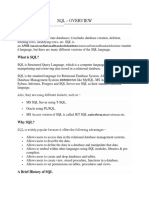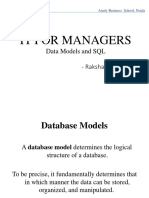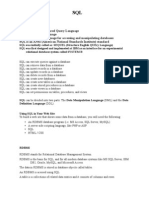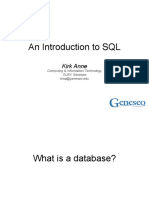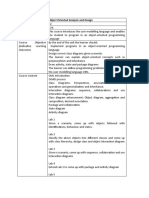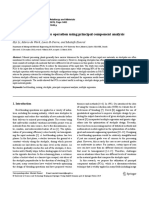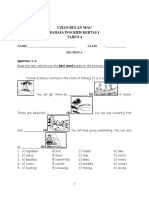0% found this document useful (0 votes)
19 views33 pagesRdbms SQL Basics
The document provides an overview of Relational Database Management Systems (RDBMS), detailing their advantages, disadvantages, and the concept of database normalization. It explains the different normal forms and the benefits of normalization, such as reduced storage requirements and improved data integrity. Additionally, it covers SQL, including its structure, data definition and manipulation languages, and various SQL commands for managing database tables.
Uploaded by
shubhpatil945Copyright
© © All Rights Reserved
We take content rights seriously. If you suspect this is your content, claim it here.
Available Formats
Download as PDF, TXT or read online on Scribd
0% found this document useful (0 votes)
19 views33 pagesRdbms SQL Basics
The document provides an overview of Relational Database Management Systems (RDBMS), detailing their advantages, disadvantages, and the concept of database normalization. It explains the different normal forms and the benefits of normalization, such as reduced storage requirements and improved data integrity. Additionally, it covers SQL, including its structure, data definition and manipulation languages, and various SQL commands for managing database tables.
Uploaded by
shubhpatil945Copyright
© © All Rights Reserved
We take content rights seriously. If you suspect this is your content, claim it here.
Available Formats
Download as PDF, TXT or read online on Scribd
/ 33







